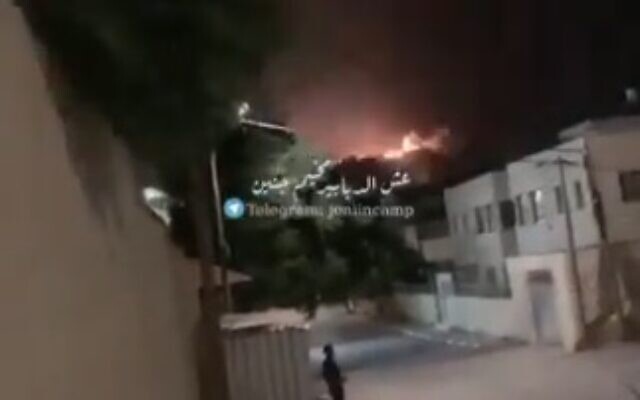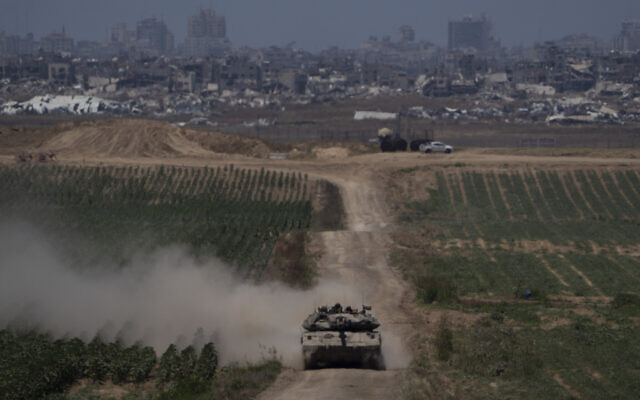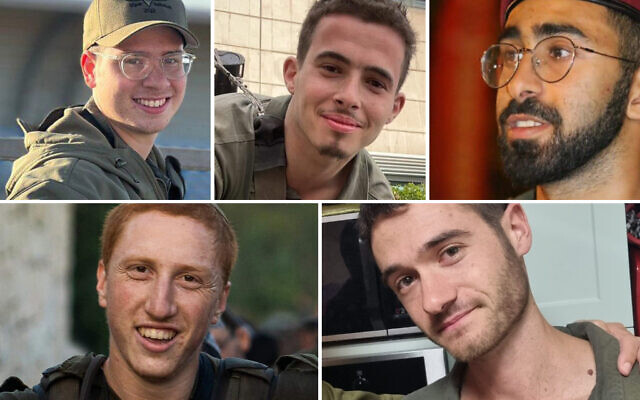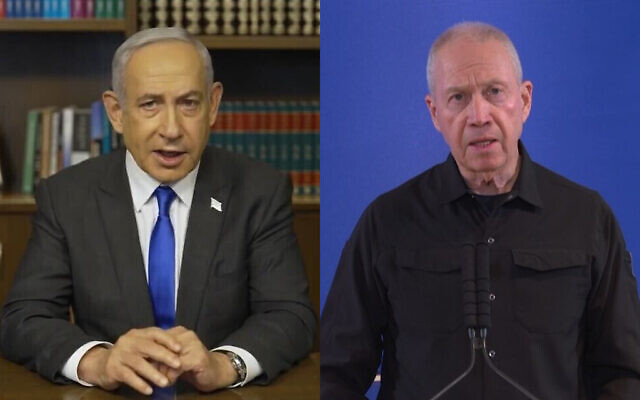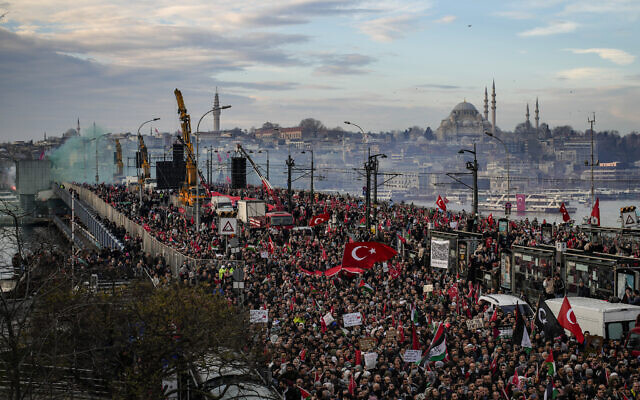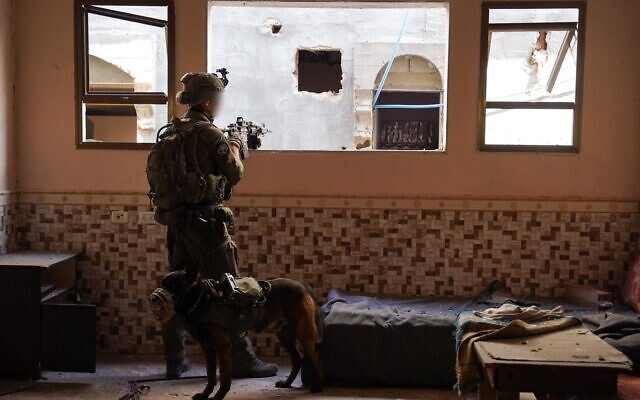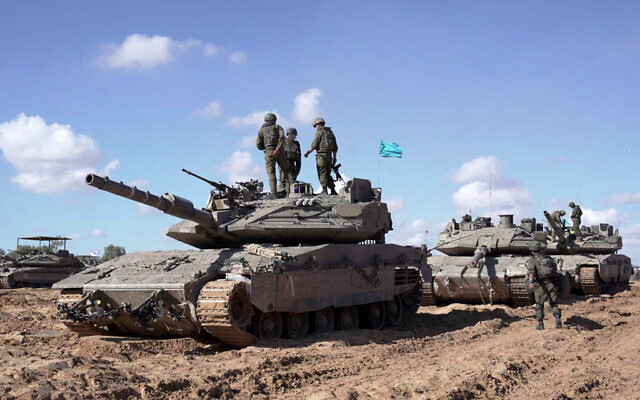‘Imad Mughniyeh was killed in joint Mossad, CIA operation’
US operatives were in Damascus for 2008 hit on Hezbollah terror chief, but bomb was triggered in Tel Aviv, Washington Post reports
Imad Mughniyeh, the global operations chief of Iranian-backed Lebanese terror group Hezbollah who died in a bomb blast in Damascus on February 12, 2008, was reportedly assassinated in a joint Mossad-CIA operation that required special approval from president George W. Bush.
The US helped build the bomb and had CIA spotters on the ground in the Syrian capital tailing Mughniyeh, but the explosion that killed him was triggered remotely from Israel, according to a report in The Washington Post late Friday.
“The way it was set up, the US could object and call it off, but it could not execute,” a former US intelligence official told the newspaper, adding that the CIA tested the bomb at least 25 times to ensure a contained blast that would cause no collateral damage.
The US official said it was important for Israel to be the one to pull the trigger that killed Mughniyeh. “It was revenge,” he said, adding that the US did not mind since Hezbollah would blame Israel in any case.
The terror group did indeed point the finger at Israel, vowed to retaliate and is believed, with Iranian involvement, to have carried out several consequent attacks against Israeli and Jewish targets abroad, including the 2012 bombing of an Israeli tourist bus in Burgas, Bulgaria and the coordinated attacks in Thailand, Georgia and India that same year. In January 2012, Israel thwarted a plan, already in its advanced stages, to kill the Israeli ambassador to Azerbaijan.
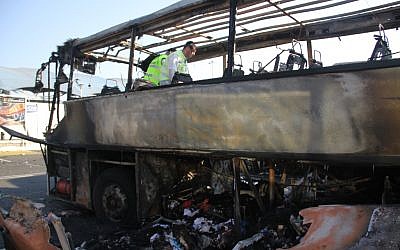
Imad Mughniyeh was implicated in some of the terror group’s major attacks including the 1992 bombing at the Israeli embassy in Buenos Aires, and the 1994 bombing of the AMIA building in the Argentinian capital, in which 85 were killed.
The senior Hezbollah terrorist was also involved in the 1983 bombing at the US embassy in Beirut, the killing in 1994 of the CIA’s Lebanon chief William F. Buckley and the 1996 bombing at the Khobar Towers in Saudi Arabia. In the years after the 2003 US invasion if Iraq, Mughniyeh was responsible for the arming and training of Iranian-backed Shiite militias in Iraq who carried out deadly attacks on American troops — all of which put him at the top of the US’s wanted list.
The Bush administration regarded Hezbollah, and Mughniyeh, as a top threat to the US, according to the report.
“There was an open license to find, fix and finish Mughniyeh and anybody affiliated with him,” a former US official who was stationed in Baghdad told The Washington Post.
In a 2007 speech, Bush singled out Syria and Iran, Hezbollah’s backers and closest allies. “These two regimes are allowing terrorists and insurgents to use their territory to move in and out of Iraq. Iran is providing material support for attacks on American troops. We will disrupt the attacks on our forces. We will interrupt the flow of support from Iran and Syria. And we will seek out and destroy the networks providing advanced weaponry and training to our enemies in Iraq,” he vowed.
The CIA had to get special approval from Bush to carry out the operation to kill Mughniyeh with the US attorney general, the director of national intelligence, the national security adviser and the Office of Legal Counsel at the Justice Department all signing off on the plan. One former official said getting the authorization was a “rigorous and tedious” process.
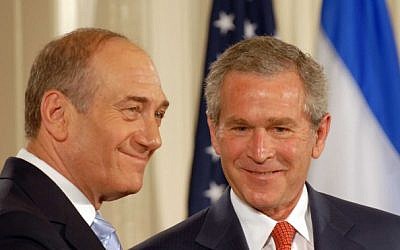
Intelligence officials had to show that Mughniyeh and Hezbollah were a continuing threat to the US. “The decision was we had to have absolute confirmation that it was self-defense,” a former US intelligence official was quoted as saying.
“All I can say is that as long as he drew breath, he was a threat, whether in Lebanon, Iraq or anywhere else. He was a very intelligent, dedicated, effective operator on the black side,” former US ambassador to Iraq, Ryan C. Crocker, told the paper.
The US had been seeking to kill Mughniyeh for years, according to the report, which also detailed a 2002 meeting in Israel between senior officers in the Joint Special Operations Command and Israeli military intelligence where the officers suggested targeting the Hezbollah terror chief.
But those discussions did not lead anywhere at the time, and the opportunity to target Mughniyeh presented itself in 2007 when Israel was gathering intelligence on Syria’s nuclear reactor, before allegedly bombing it that same year. Jerusalem and Washington were also closely monitoring and “trying to sabotage” the Iranian nuclear program during the time, according to the report.
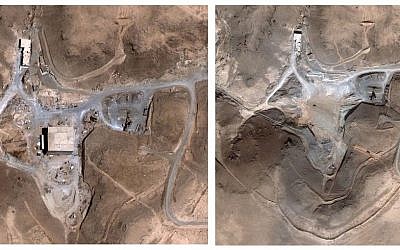
Once it was established that Mughniyeh was operating freely in Damascus, as were the Iranians, a plan was set in motion to attempt the assassination.
The report details an incident in which the deputy head of the Iranian Revolutionary Guard’s Quds Force was seen with Mughniyeh in the Syrian capital and the opportunity to kill them both presented itself before being shot down. “At one point, the two men were standing there, same place, same street. All they had to do was push the button,” said one former official.
Israel has denied any involvement in the killing of Mughniyeh and the US has never admitted any sort of involvement in the operation. A State Department spokesman said after the killing: “The world is a better place without this man in it. He was a coldblooded killer, a mass murderer and a terrorist responsible for countless innocent lives lost.”
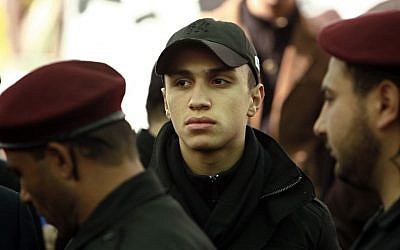
Mughniyeh’s son, Jihad, a Hezbollah commander, was killed on January 18, along with 11 other Lebanese and Iranian operatives, including a general, in an airstrike attributed to Israel, on the Syrian side of the Golan Heights.
The strike reportedly targeted the leaders of a substantial new Hezbollah terror hierarchy, based in the Syrian Golan, that was set to attempt kidnappings, rocket attacks and other assaults on military and civilian targets in northern Israel.
In response, Hezbollah killed two Israeli soldiers on Wednesday in an attack on an IDF convoy on the Israel-Lebanon border. Both Iran and its Lebanese proxy vowed Friday to retaliate forcefully to any Israeli action on Syrian soil.
Prime Minister Benjamin Netanyahu on Friday held Iran ultimately responsible for Wednesday’s attack, and said Tehran was seeking to open multiple fronts in its “sustained” war against Israel. He slammed the international community for preparing a potential deal with Iran that would leave it with the capacity to build nuclear weapons.



